Rebecca Ashton interviews German assistant dressage trainer,
Jonny Hilberath
What does it take to make the German Olympic Team, and end up on the podium?
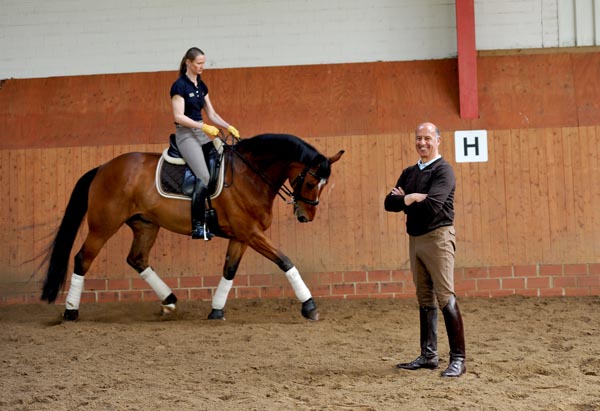
There are a few parts that make the success for sure. First of all you need the horse which basically has no weaknesses.
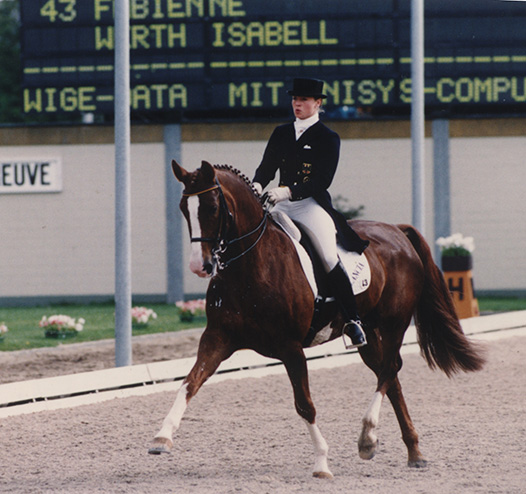
Isabell Werth and Fabienne at Aachen in 1991
For example, if you think about Isabell, her way of being successful for so long is not a coincidence because she’s done it with so many horses. Her knowledge in the saddle, it is also her timing and her feeling. That is definitely her strength and what makes her outstanding.
Winning a medal at the Sydney Games in 2000
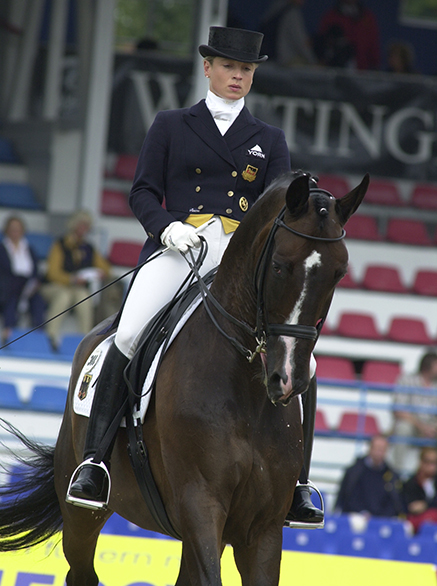
Isabell and Antony at the European Championships in 2000
Would Isabell be the greatest competitor you’ve ever seen, or were there others in the past that you would rate up there as well?
At the moment, she’s definitely the one to beat. She’s so mentally strong in the test, and she reads her horses perfectly; she reads the way the horse is feeling. She knows exactly what she has to do. I have seen her when there is a lot of atmosphere; a crowd of 8000 people, and it’s hot, and she does it so well. She has had different horses, different characters and she gets the perfect ride.
The recently retired star – Weihegold
Can you teach that?
You can. For example, I can give my experience to a younger rider which helps, but at the end of the day, it’s learning by doing. Isabell has ridden 1000s of tests, and that is a huge difference. She’s done it from when she was 17 years of age.….
Watching her ride, she is so focused…
Yes, in a tunnel. It’s a passion. It’s not that you say I have a few more years to ride and I’ll make the best out of it. She has so many top young horses. She plans.
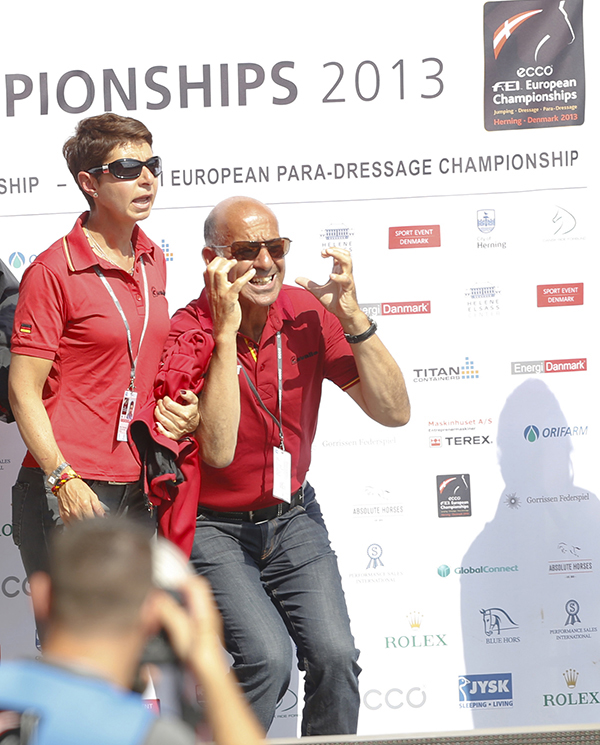
Monica Theodorescu and Jonny, a very involved support team…
What advice would you as a coach give your rider as they are about to enter the Olympic arena?
“What I really like to say is, ‘try to make the best ever test that you have done. If you have a good horse and you have a good ride, you will get a good result.’ If you focus yourself too much on I want to win a medal or I want to beat this or that, it blocks you in the head. You have to be a hundred thousand percent with your horse, which Isabell can do perfectly. Go in a tunnel with no distractions from the outside, and just be with the horse. Because again, the timing; it’s a fraction of a second when you have to make a decision, and it can make a mega impact, so you have to be very much concentrated.
Since you started out in dressage what do you think has been lost or gained, either good or bad in competition?
“What I really like is that we are much more educated when it comes to horses, to training, we are at a much, much higher level and standard than we were 20 years ago, because we are much more into the horse, the welfare of the horses, the biomechanics of the horse; how and why the horse reacts for example. The right training methods, what the horse should be fed, the whole package around the horse is so much better. I think al that has brought us quite a bit forward.
“If you compare the riding in the old days, for sure the horse was also different in those days. For example in Germany, we had those big Warmbloods which were a little bit slow and a bit heavy so the riding was a bit like that. We Germans were known for our tough riding, but the horses have now educated us differently. They are so much hotter, and finer, and a bit more Thoroughbred, so the riding has changed a lot.
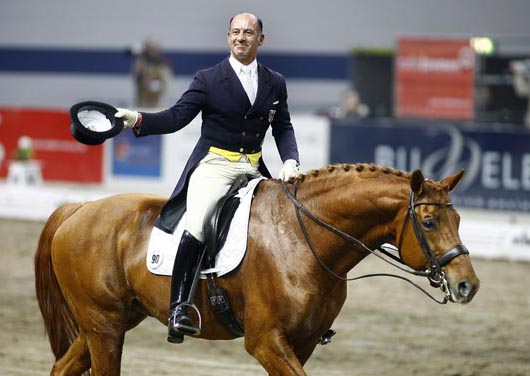
Jonny and the glorious Wenckstern
more follows
How do you think your riding and training has evolved? Is it lighter now?
“Absolutely. You have to be open to that. That is important, also in life, you have to go forward and be willing to leave your own comfort zone. That’s a problem for many people, they think ok, I’m safe here and if I go out of that, maybe I lose a bit of face, but if you want to go on and go further and get better, you have to take a risk.
Everyone focuses on “Classical training” and I guess you could argue that was established a few hundred years ago and we still think it’s relevant, but we also have to evolve with the horse; most aren’t Spanish like the Baroque horses but most aren’t the heavy Warmbloods either, so how to you decide what to take forward with you and what to leave and evolve from?
“If you see it like that, a horse is still a horse, it still has basically the same shape, four legs, a head and all that, but for example, our modern horses, they have more elasticity, more possibility with the body, whether you jump a fence, or go fast, or collect. Through the breeding the horse has become a little bit more sensitive so when it comes to the physical fitness, you need to care about the horses, but that’s why the riding and training has had to change. For sure there are many, many rules which have existed for 100 years, without a doubt, but nevertheless, we know much more about the horses, what is possible, what is not possible, what is non co-operating behaviour compared to what is just not possible for the horse. So we know much more and we humans, when it comes to our own fitness, it’s a different story nowadays. When I was a young man, no one was talking about the fitness of the rider. The horse had to run and do what I wanted, I could be totally overweight and it was fine. These things just don’t work in the top sport anymore.
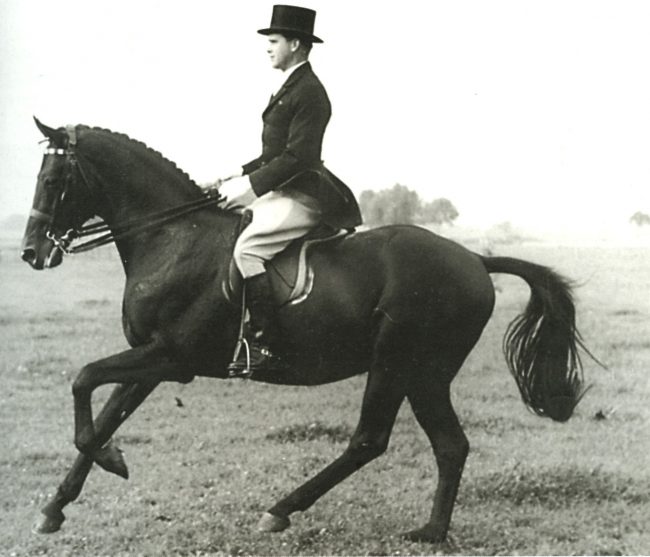
Schultheis and the Thoroughbred, Pernod
You trained with such greats as Willi Schultheis. Do you think he would like what was going on in the competition arena today?
“I don’t know actually because what I said before, you have to be open to change and to think about it. I could imagine he would, because he was a jockey, he was from the racetrack. He was a horse person and he loved Thoroughbreds, for example. He had a hand for fine art, you could say, so his style was very different because he had the horse very much uphill. Looking back maybe the horses could have been a little bit more through and over the back. I’m sure if he had gone through this process with us, he would have changed. He was a fantastic man.
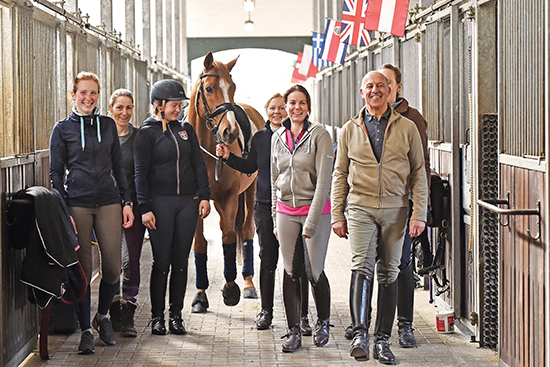
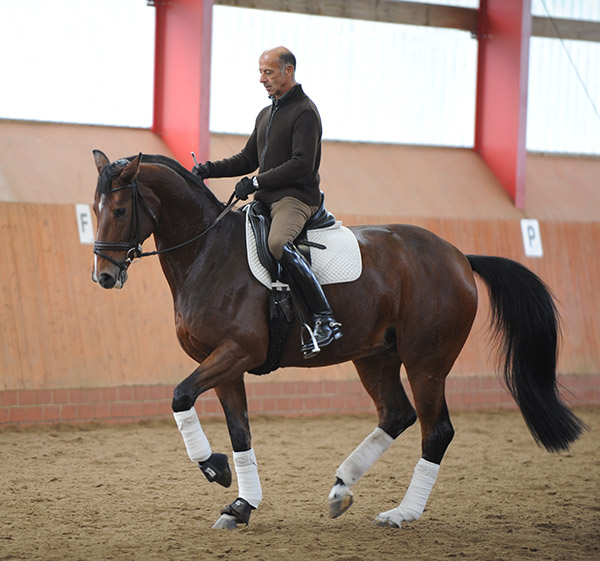
” I can tell you one thing, I have no running reins in my stable. I think it’s a completely unacceptable weakness as a rider, especially as a potential international rider. In my stables also, we are never rough or rude to the horses. We ride without whips most of the time. I use the whip as just a support of my aids sometimes but never use it to punish the horses.
“I will not have any harsh and rough riding in my place. I also really try to see and read any horse a bit differently. Sometimes people come to me to ride and train and they have only one horse and this poor thing gets worked every day. But you know what, if you want the best from your horse, he has to have a day off even if the rider would much rather have another lesson. The horse is your partner and if he’s tired, he’s tired. What you want should not be the most important thing.
Isabell and Bella Rose – Bella and Bella
“Let’s go back to Isabell. You watch Isabell riding, every single day on every single horse, she starts with the basics. It’s stop and go, and softness and control of the back and the neck, and that makes the quality. You see many horses which do the Grand Prix but it’s not a pleasant picture because you see open mouths and stiff necks, harsh riding and all this sort of thing. Even when they do the tricks, maybe without mistakes, but they are not going to get high percentages. Never.
You see these open mouths/ tight necks…
“The contact should be forward to the hand. It is the wrong pressure on the horse; the wrong tension in the horse, also mental tension in the horse because the mouth is like a mirror to the brain. That is something that definitely has to be fixed.
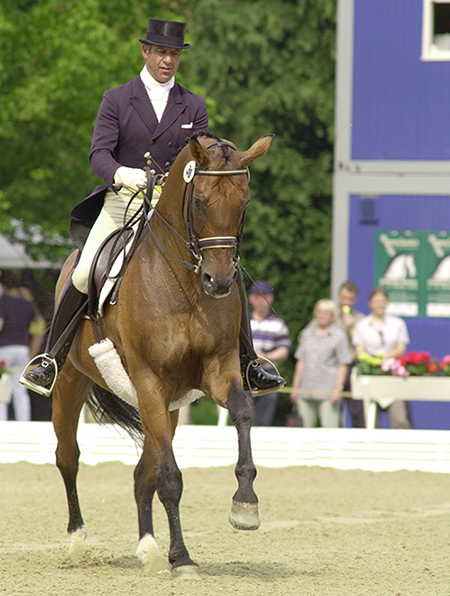
Jonny competing Edelmann
So if someone came to your place, they’ve got their Grand Prix horse, what’s the first thing that you do to address it?
“First of all you get the double bridle off his head. You get them in a snaffle. ‘But I only ever ride him in a double!’ Well now you don’t. Even take the lower strap of the noseband away. Just to see the basic of the mouth. Then I go step-by-step. Most of the time, the mouth and tongue is a mirror for the rest of the body, so I am not so busy at that stage looking at the mouth, I am busy looking at the hindquarter and the back and the whole connection through the horse.
So you start with the German Training Scale; rhythm, relaxation, contact, impulsion etc and then you move onto lateral work to get the back. Do you keep your lateral work very simple, for example, just a whole long side shoulder in, or do you keep the horse thinking a bit with different combinations or patterns…or does it depend?
“I do lateral work for longer so I can feel if it changes something in the horse. When you start with the lateral work, sometimes the horse is struggling with his balance, with the straightness, with crossing his legs so I use the lateral work to make the body more supple. It’s not to get the attention of the horse, it’s more a treatment for the body. At the same time, for sure I get more reaction to my aids, my leg, my reins, but I do lateral work for the horse’s body – I want to get a flow from it. So I will do it across the diagonal, letter to letter, 60 metres.
“I don’t really do it for a short time. I can do that when the horse is in balance. For example, I might use leg yield to produce balance over the suppleness, so it depends always on the level of education of the horse. It really depends so much on the horse. If you have a horse who might move spectacularly, it would make him insecure to make quick transitions. I’m more for the long lines.
You’ve said before the whole point of training is to know the mechanics of the horse and to respond to that. Do you think riders have enough knowledge of this?
I think yes, because we are getting more information through magazines, and I think people are more interested in it. People want to be successful, but not everybody is successful, so they go searching. In general I think it’s getting better but still I think the training is a big issue. I don’t say it’s too bad or wrong but if you want to have real progress, it needs time. Having enough time, is the biggest factor. Certain things take more time, but when you get that, you catch up quicker.
Is training is the main thing holding that holds people back?
Yes. And also it’s the competition and if you don’t see good enough riding. I know it for myself and I can see and hear it from my students, it helps so much to be in an environment where everything is on a higher level, because it brings you up and makes you ride better and you also look at things differently. If you think of, and plan an international career, you have to compare yourself to the top people.
Can you expand more on having a structure to ride your test?
The whole package, for example how to warm up then horse, how long to warm it up, how I get my horse into the test. I see many people over-riding the horse in the warm up, so when they finally go down the centreline, the horses are dead! They’re tired! Which is a shame because they are often nice horses but the riders are insecure and nervous. They need the right guidance, someone there to say, “whoa, calm down.” They need to believe a little bit in themselves.
You have to orientate yourself always to the top. Even if your horse can never have the most quality, the quality of riding and performance is important.
So watch a lot of Isabell!
She is always something. I have watched her for decades and I still think that. You can see her in the warmup and you think, “Oh this will be a difficult ride today” and then she goes in and you think, how can she do that?!
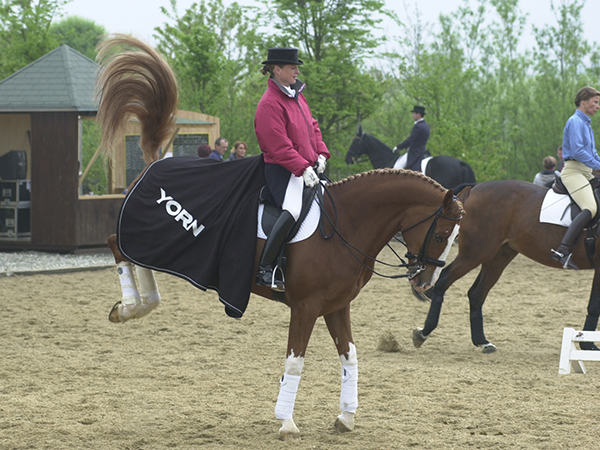
Isabell and Aleppo – a difficult ride today?
Can you over coach people? Where do you find the balance of really helping and letting them sort things out for themselves?
It is also a little to do with the personality. I think people ride how they are, from the temperament. The more laid back person needs more, and opposite for sure. If I get a new student and he’s not so much in my training system, I talk a lot because I want him to understand. But when I see that he understands more and the horse understands more, I go backwards, I talk less. What I want to do is to help any rider to help himself. Again, when you talk about performance, you have to know what will come up in the white rails and how you will manage that. So that is my goal for any horse and rider combination, that they are physically and mentally strong enough to do it without me.
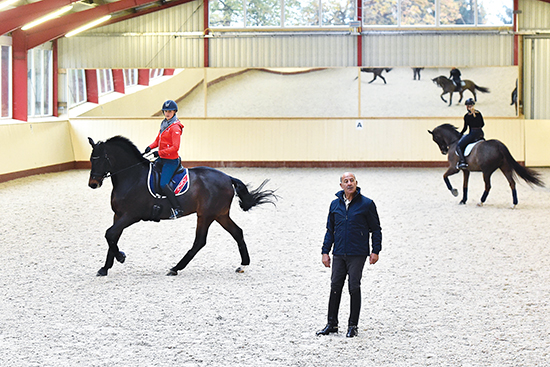
Sometimes you see horse, rider and trainer, especially the trainer, and until the horse and rider step into the ring, the trainer is constantly talking. Often the rider then can’t even feel their horse because they listen to the person who talks non-stop. That can be in my opinion, a problem. It can be overdone.
So it’s finding the balance.
Absolutely. That’s what makes a good trainer.
You talk about playing with the horses in training rather than drilling them…
When I talk about playing, it means to cooperate, that is the point. I have to sit on something that is with me, and on my side, and I need to be able to trust my horse. I don’t mean that the horse shall not have it’s attitude and temperament, but they have to cooperate with me.
So if we take a stallion for example and he has too much adrenaline, then I go completely back from my training, say if I was going to train a pirouette, and I might give him a forward canter. Too much strength, we take a little bit of it away and then we quietly come back to the pirouette. So in that moment I show a little bit my strength, without being rude or strong.
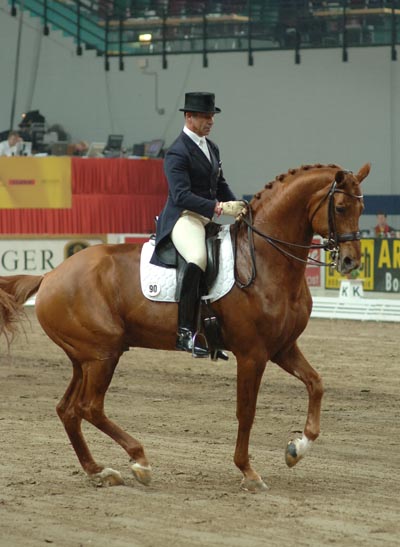
Wenckstern – my horses my teachers
In your career, you’ve learnt both from human trainers, and the horses. What percentage would you say has been human versus horse?
It’s difficult to say. I personally believe I’ve learnt both on and off the horse. For sure I got great help from Rehbein, and others, they gave me a start up which was remarkable. But then until I got it right, I had to practice and my poor partner horse had to take sometimes a lot, until I got it, so I really have to salute the horses, they made me.
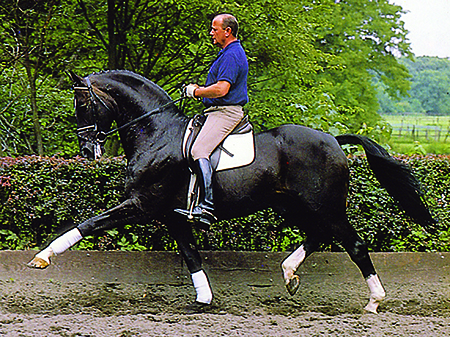
Herbert Rehbein and Pike Bube
My last horse Fariano, which was a very, very special horse,
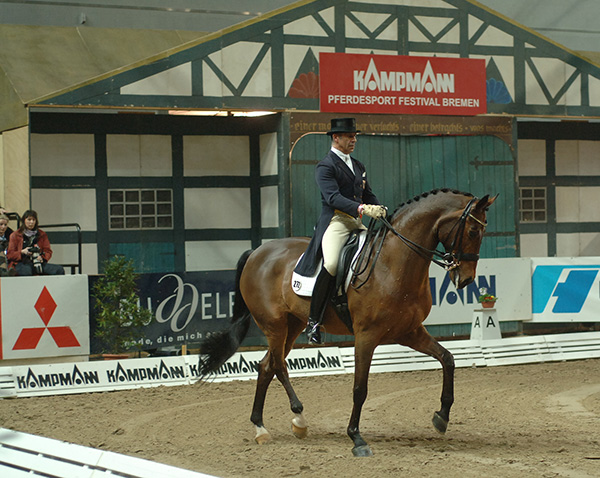
The last horse – Fariano
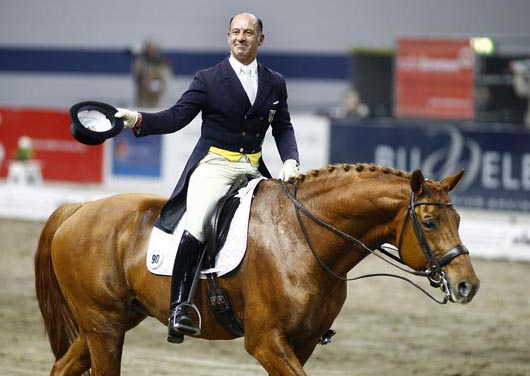
Jonny and the successful stallion, Wenckstern
Breeding a top dressage horse? Go to www.ihb.com.au and find the best blood lines in the world, available in Australia.
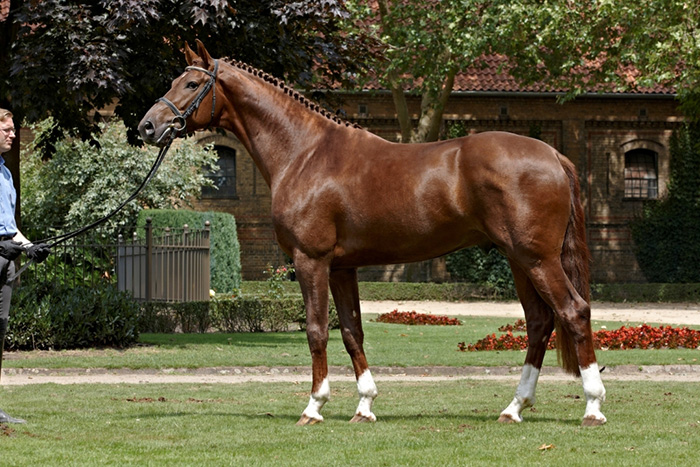
Vitalis


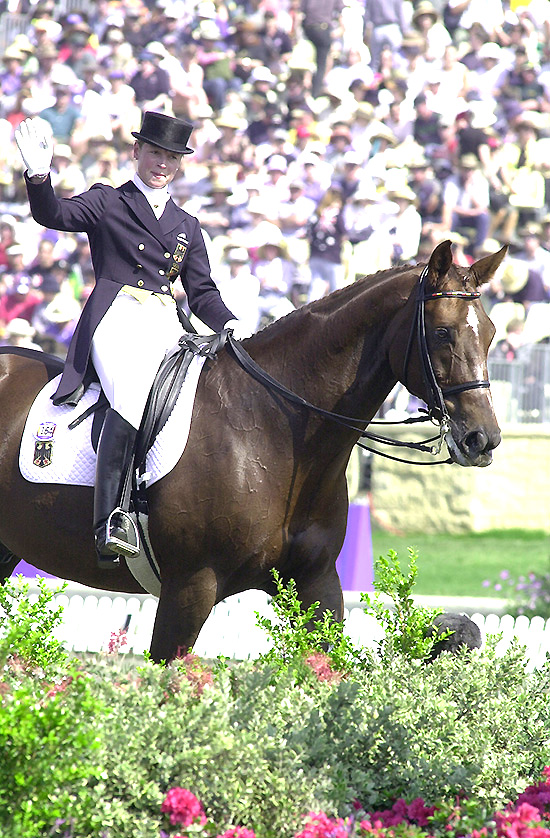
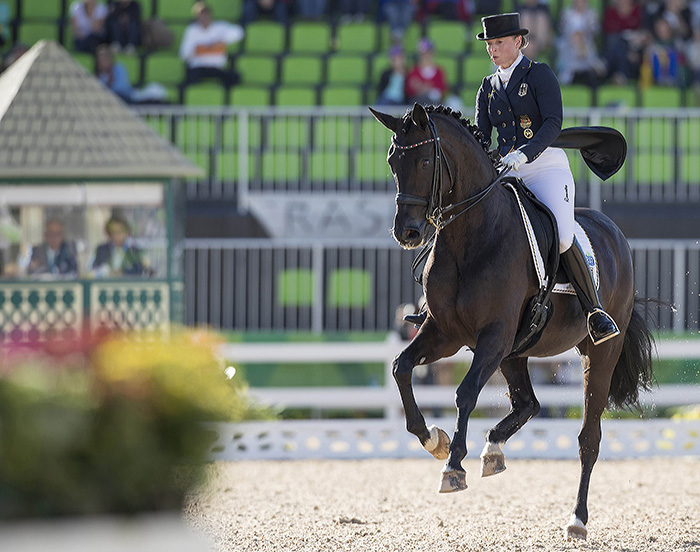
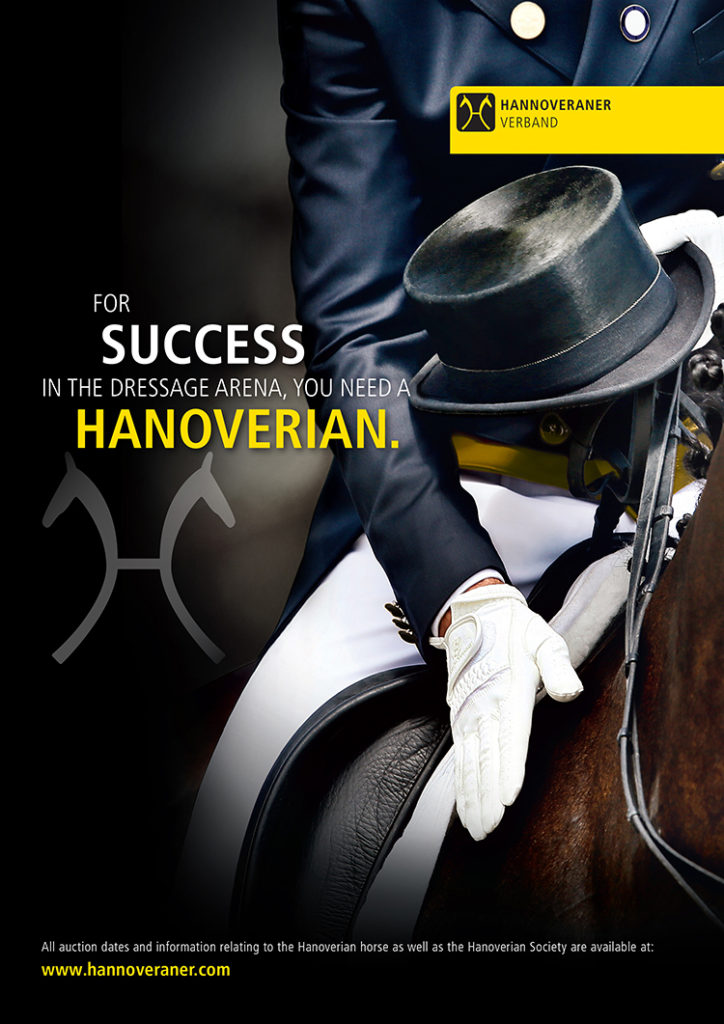
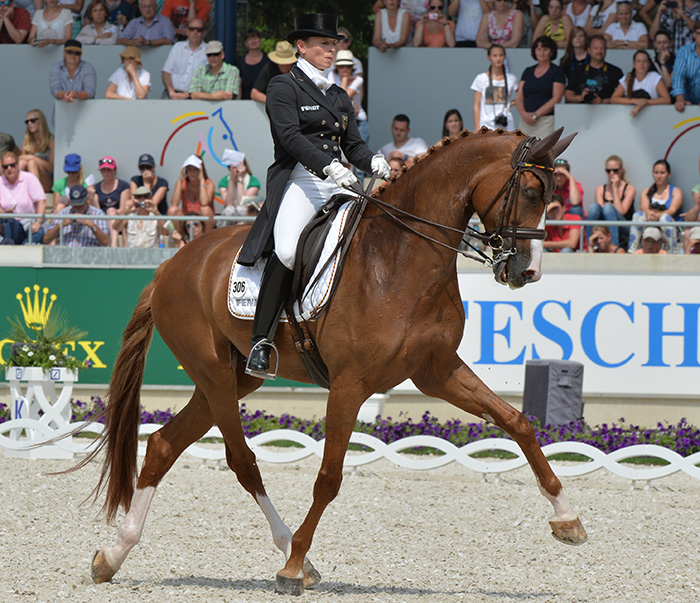
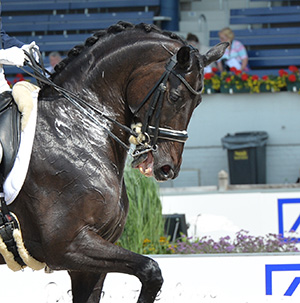
Well written. Thank you
I enjoyed reading this – and will take some of the advice to improve my riding (first of all to have a look at the almost forgotten Harry Boldt book)
Thank you in deed!
This is so positive – All ‘third world” could discover a lot of good advice here!
Really enjoyed reading this ! The focus on the horses wellbeing and the riders knowledge and ability to guide and show the horse what and how to perform with harmony! I wish I had such a trainer! After being with horses for 47 years and actually having a 2 year education from Sweden , I still feel there is so much more to learn and perfect. I guess that is the charm with this sport.
The compassion with which this article was written is refreshing. Very useful both tending to your horses physical and mental state.
Thank you!
Amazing. Thank you for your insight.